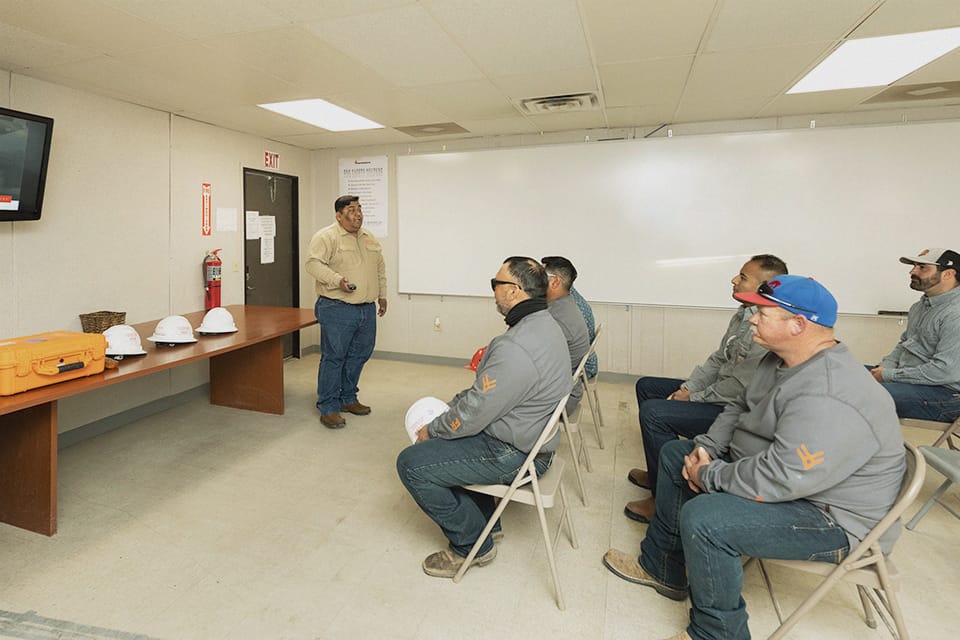
SafeLand Training: 7 Benefits that Keep Workers Safe

The latest National Census of Fatal Occupational Injuries reported 5,486 fatal work injuries in 2022; the highest number of fatalities in the workplace since 2013. That means a worker died every 96 minutes from a work-related injury.
In high-hazard industries, such as oil and gas, ensuring the safety and well-being of workers is a top priority. Comprehensive and ongoing training is key to mitigating risks, adhering to compliance standards, and reducing liabilities. There are many training programs available, but SafeLand training stands out for its tailored approach to the unique needs of high-hazard industries.
SafeLand has earned its reputation as a gold standard within high-hazard industries, offering a comprehensive safety orientation program specifically designed for high-risk environments.
This article lists 7 advantages of SafeLand training, highlighting its importance in today’s safety-focused environment.
What is SafeLand Training?
SafeLand training is a standardized safety orientation program for workers in the U.S. oil and gas industry. It’s designed to provide basic awareness-level general safety information that every employee should know before entering a job site and while performing duties.
Several topics are covered including (but not limited to):
- Hazard recognition
- Confined space
- Stop work
- Energy isolation
- Working at heights
- Heat safety
- Driving
- Bypassing safety controls
- Trenching and excavation
7 Benefits of SafeLand Training:
1. Industry-Recognized and Widely Accepted Orientation
SafeLand programs are recognized and widely accepted across the industry. SafeLandUSA certification holds significant weight and demonstrates compliance to rigorous safety standards. This recognition ensures that workers trained under SafeLand protocols are equipped with the necessary knowledge and skills to navigate hazardous work environments safely.
2. Consistent and Standardized Safety Awareness Education
Consistency is key in fostering a culture of safety within high-hazard industries. SafeLand training offers a standardized curriculum that covers essential safety protocols, hazard identification, and emergency response procedures. This consistency ensures that all employees receive uniform safety awareness education; therefore, reducing the likelihood of confusion or misinterpretation regarding safety protocols and processes.
3. Orientation Remains with the Employee Throughout Their Career
SafeLand training isn’t just a “one and-done” event; it’s an investment in the long-term safety of employees. The knowledge and skills developed during SafeLand orientation remain with workers throughout their careers, serving as a valuable resource in navigating complex workplace hazards. This continuity fosters a safety-conscious work environment that affects all levels of the organization, from entry-level workers to seasoned professionals, and executive leaders.
4. Eliminates Redundancy of Multiple Orientations for a Single Employee
In industries where contractors frequently work across several different sites and projects, the need for redundant orientations can be time-consuming and inefficient. SafeLand training streamlines this process by providing a standardized orientation that is universally recognized across various worksites and projects. By eliminating the redundancy and confusion of multiple orientations, SafeLand training allows employees to focus on their tasks while ensuring consistent safety protocols are upheld.
5. Meets API RP 75 and OSHA Awareness Training Requirements
Compliance with industry standards and regulatory requirements is crucial in high-hazard industries. SafeLand training aligns perfectly with industry regulations, including the American Petroleum Institute’s Recommended Practice 75 (API RP 75) and Occupational Safety and Health Administration (OSHA) awareness training requirements. By meeting these strict standards, SafeLand training helps organizations demonstrate their commitment to safety excellence while mitigating regulatory risks.
6. Satisfies Most Operators’ Contractor Safety Training Requirements
For contractors seeking to engage with hiring clients in the industry, compliance with specific safety training requirements is often a prerequisite. SafeLand training helps to satisfy the safety training mandates of almost all major operators. By ensuring that contractors possess the necessary SafeLand certification, organizations can streamline the contractor onboarding process and expedite projects while maintaining compliance with safety standards.
7. Provides a One-Day Safety Orientation Accredited by SafeLand USA
Efficiency is extremely important in the fast-paced environments of high-hazard industries, like oil and gas. SafeLand training recognizes the importance of time management by offering a concise, one-day safety orientation program accredited by SafeLand USA. This condensed format ensures that employees receive comprehensive safety training without sacrificing valuable time away from their jobs.
SafeLand Training is Easy to Access Through Accrediting Organizations
SafeLand is at the top of the training podium in the world of safety education for the oil and gas industry. With its industry-recognized orientation, standardized curriculum, and alignment with regulatory requirements, SafeLand training offers unparalleled benefits for organizations and workers alike. By investing in SafeLand training, companies demonstrate their unwavering commitment to the safety and well-being of their workers.
Ready to strengthen your safety culture? Veriforce is proud to be one of only three Accrediting Organizations endorsed by SafeLandUSA. Allow us to help you optimize and streamline your training programs, to ensure all workers receive world-class, standardized training when they need it.
Contact us today to learn more.




